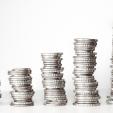Dollar Rallies as Home Sales Gain Backs Fed Taper; Rand Slumps
New York (Feb 26) The dollar rose the most against the euro this month as new-homes sales unexpectedly rose last month, boosting speculation Federal Reserve Chair Janet Yellen will reiterate the central bank’s plan to continue to cut bond-buying when she testifies before a Senate panel tomorrow.
The U.S. currency strengthened versus most of its 16 major peers as the housing reports comes at a time when a harsh winter has weighed on economic-growth early this year. South Africa’s rand fell from a six-week high after Finance Minister Pravin Gordhan lowered the economic growth outlook. China’s yuan pared losses after reaching the weakest level since July as the People’s Bank of China cut the reference rate.
“The market got whiplashed by the new-home sales report, it’s 180 degrees different from what we expected,” Michael Woolfolk, a global-markets strategist at Bank of New York Mellon in New York, said in a phone interview. “She’ll continue to say temporary factors will depress first-quarter growth, but the committee believes the outlook for 2014 is positive.”
The dollar rose 0.6 percent to $1.3669 per euro at 12:42 p.m. in New York, the biggest advance this month, and climbed 0.3 percent to 102.58 yen. The Japanese currency gained 0.2 percent to 140.22 per euro.
Dollar Measure
The Bloomberg Dollar Spot Index, which tracks the greenback against 10 major currencies, rose 0.4 percent to 1,023.25. Treasury 10-year note yields touched a one-week low amid as demand for safer assets rose as Russia ordered military tests amid turmoil in Ukraine.
South Africa’s Treasury forecast that the economy will grow 2.7 percent this year from an October estimate of 3 percent. Gross government debt will probably increase to 48.3 percent of gross domestic product in three years’ time from 45.8 percent this year, risking further credit-rating downgrades if growth weakens. The Reserve Bank last month unexpectedly raised its key interest rate for the first time in more than five years.
“The lower growth forecast for this year and the tighter fiscals imply that more of the burden for growth stimulation will fall on the central bank,” Abbas Ameli-Renani, a London-based emerging-markets strategist at Royal Bank of Scotland Plc, said in an e-mail. “This supports our view that another rate hike in March is unlikely as things stand.”
The rand retreated 1.1 percent to 10.8422 per dollar after advancing as much as 0.4 percent.
Yuan Trade
The yuan was at 6.1248 per dollar after depreciating to 6.1351, the weakest since July 30, according to China Foreign Exchange Trade System prices.
The People’s Bank of China cut the yuan’s fixing by 0.01 percent to 6.1192 per dollar, the weakest since Dec. 20. The spot rate was 0.08 percent lower than the fixing, after the two converged yesterday for the first time since September 2012. It can diverge by a maximum 1 percent from the fixing.
Two-way capital flows will become the “new norm” for China and the exchange rate is likely to be more volatile as U.S. stimulus is pared, the State Administration of Foreign Exchange said in a report yesterday.
“The PBOC is behind the yuan weakness to counter hot money inflows and to tame expectations as it prepares for band widening,” said Nathan Chow, a Hong Kong-based economist at DBS Holdings Group Ltd. “Given it’s engineered by the PBOC, the drop won’t be too significant as it’s still in the control of policy makers.”
Ukraine Tension
The dollar strengthened as Ukrainian protesters were called to a rally in Kiev’s Independence Square to help mold an interim cabinet as tensions flared in the Russian-speaking Crimea region after pro-Western politicians took control of the capital.
Yellen said this month the economy has strengthened enough to withstand cuts to monetary stimulus, adding that only a notable change to the outlook would prompt the central bank to slow the pace of tapering its bond purchases. She is scheduled to testify before the Senate Banking Committee tomorrow.
The central bank cut its monthly bond-buying program by $10 billion a month in January and February, citing economic improvement, to $65 billion.
Purchases of new homes increased 9.6 percent to a 468,000 annualized pace, exceeding the highest estimate of economists surveyed by Bloomberg and the most since July 2008, figures from the Commerce Department showed. Demand improved in three of four regions.
“Any data or any Fed speakers going forward that reiterate the Fed’s tapering is dollar-positive,” Omer Esiner, chief market analyst in Washington at the currency brokerage Commonwealth Foreign Exchange Inc., said in a phone interview. “Investors are really concerned about how weak economic data may influence the outlook for monetary policies.”
Source: Bloomberg












